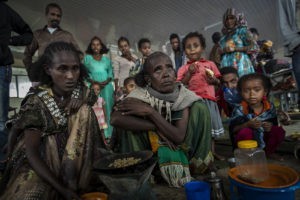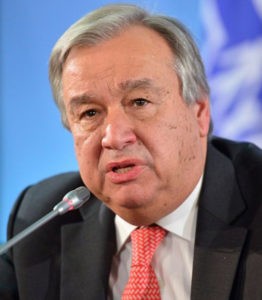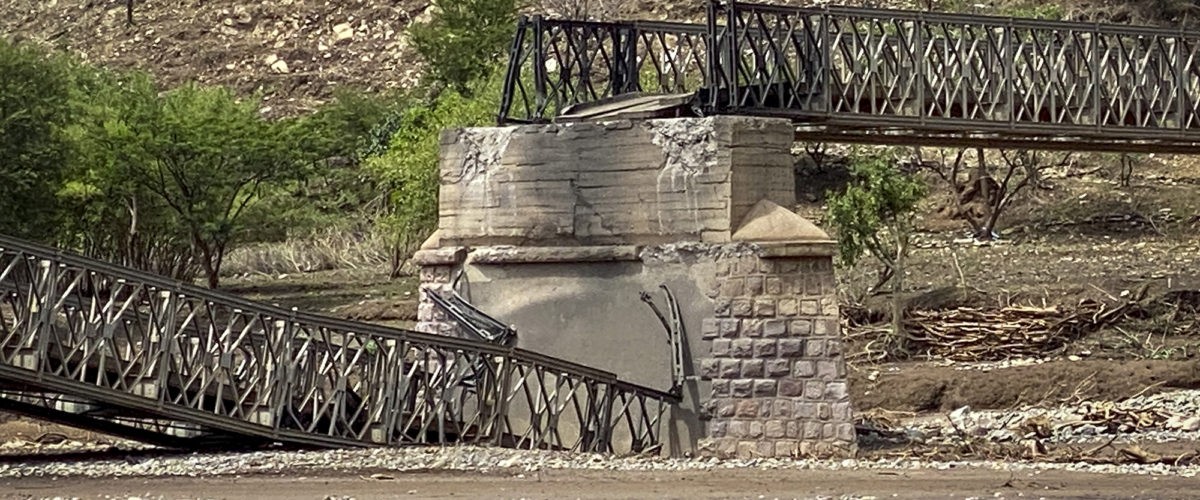With the cessation of hostilities in Tigray, Ethiopia, the attention of many observers now shifts to the humanitarian crisis created by the conflict within and outside the East African country.
Eight months of fighting and violence in the multi-lingual and religiously diverse nation left an estimated 2 million people displaced, with about 400,000 others in dire need of food and assistance.
According to a June 24 report by The United Nations Office for the Coordination of Humanitarian Affairs, four days before a cease-fire was declared in the region by Ethiopian Prime Minister Abiy Ahmed, “more than 350,000 people are already facing catastrophic conditions and more than 1.8 million people are in emergency level of acute food insecurity in Tigray and adjacent locations in Amhara and Afar affected by the conflict. Without urgent and unimpeded food aid, the severity of acute food insecurity is expected to increase through September with over 400,000 people projected to face catastrophic conditions.”
The report further reveals the scale of the response: 419 U.N. staff supporting the humanitarian response and 123 partners operating across the region.

On May 5, 2021, Tigrayan women Tarik, center, and Meresaeta, left, who fled from the town of Samre, roast coffee beans over a wood stove in a classroom where they now live at the Hadnet General Secondary School which has become a makeshift home to thousands displaced by the conflict, in Mekele, in the Tigray region of northern Ethiopia. (AP Photo/Ben Curtis, File)
It also reveals the immediate needs of the victims: “Food assistance remains the largest component of the humanitarian response. As of 22 June, and since the release of the latest Northern Ethiopia Response Plan on 1 May, about 3.7 million people of the targeted 5.2 million people received food assistance. During the reporting period, nutrition partners screened about 45,000 children under 5 … for malnutrition. Over 1,000 children received treatment for severe acute malnutrition and about 5,000 for moderate acute malnutrition.”
The humanitarian situation is not just limited to victims of the war in Ethiopia. Neighboring Sudan also is feeling the pain as many Tigray inhabitants fled their homes to the neighboring country. About 70,000 Ethiopians are reported to have fled Ethiopia for Sudan since the violence broke out last November.
This dire situation, as of June 28 when a cease fire was declared in Tigray, had not improved. In fact, there are fears that the situation remains tense and may worsen, as no one knows what to expect. While the declaration of cease-fire may have come as a relief to many people, Tigray rebel fighters who had been locked in a battle with Ethiopian and Eritrean soldiers (with the latter serving as an ally of Ethiopian soldiers), appeared keen to continue with the fighting. The conflict broke out after a group, Tigray People’s Liberation Front, made attempts to challenge the Ahmed administration by seeking to run a parallel government in the northern region of Tigray.
Reacting to the cease-fire announced by Ahmed, Getachew Reda, on behalf of the rebel Tigray People’s Liberation Front, said, “We are not party to and will not be part of such a joke.” However, the TPLF went on to list some conditions for its members to lay down their arms. Among the conditions is that all foreign fighters in Tigray should leave or be routed from the land, and for humanitarian aid to be provided for victims of the conflict.

António Guterres (Photo: United Nations Mission for the Referendum in Western Sahara)
It is not just the TPLF that desires for foreign troops — of which soldiers from neighboring Eritrea are fingered as culprits — to leave the territory. The U.S. government through its officials has long held this position, and Antonio Guterres, United Nations secretary general, made the point recently: “I’m deeply concerned with the present situation in Tigray. It is essential to have a real cease-fire and the real cease-fire paving the way for a dialogue to be able to bring a political situation to Tigray. The presence of foreign troops is an aggravating factor of confrontation and at the same time full unrestricted humanitarian access must be guaranteed to the whole territory.”
While concerns persist about getting aid to many in dire need of help in Tigray and Sudan, some of the routes to deliver relief packages in Tigray are believed to be either unsafe or inaccessible. A July 10 report by Aljazeera quotes Neven Crvenković, spokesman for the U.N.’s refugee agency in Ethiopia, as saying: “We are extremely concerned about the access limitations in and out of Tigray with both Shire and Mekelle airports closed and some roads connecting Tigray blocked, particularly the road between Shire and Debark where we have an operational base in the Amhara region.” He added that “destruction of the bridge across the Tekeze River has rendered this road impassable — this is gravely affecting our ability to move in staff, aid material as well as basic supplies such as food, fuel and cash.”

Emamsy Mbossa Ngossoh
Emamsy Mbossa Ngossoh, who holds a master’s degree in negotiation and conflict resolution from Columbia University, while assessing the situation in Tigray, said, “On the ground, it is still a nightmare for humanitarians to access the area and locate the displaced population.“
Noting that the Tigray conflict had inflicted pain on innocent people, Ngossoh urged both parties to lay down their arms.
“The Ethiopian government needs to take its responsibility and take advantage of the relative peace in the region to open discussions with the Tigray people (fighting) to defend their region,” he said. “There are economic and development priorities at stake at the moment, and both parties need to be aware of that. They have to seize this opportunity to engage in discussions and mediation in order to find a sort of settlement.”
It is hard to see a form of lasting peace “if there continues to be a politicization of the conflict,” he added. “Ethiopia needs to understand that a conversation must happen between both sides and start not only to listen to the voice of the Tigray people but also to consider their needs.”
Samuel Getachew, a resident of Addis Ababa, Ethiopian capital city, also advised the Ethiopian government and TPLF to iron out their differences, as fighting only brings pain and disaster.
“Both sides should learn from the experiences of other nations on how they dealt with differences and how countries like Canada, with all its diversity, is coexisting in harmony and not using its differences for ethnic focused conflict,” he said. “I would hope both sides would solve their differences with ample intervention from respected actors and focus on what matters for Ethiopia like the dam, which is expected to bring electricity to a population that lacks it and development that is still needed.”
On the prevailing humanitarian crisis in Tigray, Getachew said that while the Ethiopian government has expressed its desire to tackle the problem, it will require concerted effort to do so.
“The Ethiopian government says they are going to (sort out the humanitarian problem), but I do not think the nation has enough resources to do that,” he explained. “An international response is needed more than ever.”
Related articles:
In Tigray, Ethiopia, six months of pain, suffering and disaster
Here’s one simple reason to support refugee resettlement | Opinion by Allison Lanza


